ClassicRadar: The ten greatest years in videogame history
We calculate the best 120 months of gaming. Which do you remember?

This month marks the five-year anniversary of GamesRadar, and to celebrate, we’re bringing back some of our favorite past features. This was one of our very first, originally posting way back in July 2006. Would you add 2007, 2008, 2009 or 2010 to the list? How will 2011 compare? Before you complain that we missed an earlier year, though, be sure to read our follow-up, in which we pick the next five greatest years in videogame history.
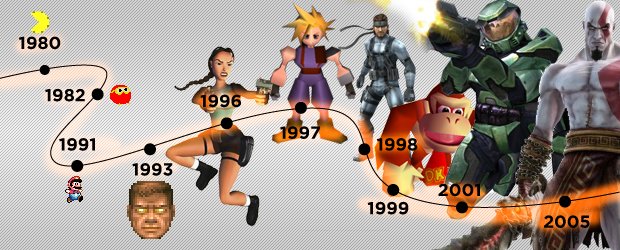
How did we decide the 10 greatest years in videogame history? First step: We made a huge list of the best titles from the past four decades and taped it to the wall. Second step: We fought. Viciously. For days. Literally.
We also considered each year as a whole, looking at how many great games came out, just how great each was, and how they play today. We focused on the US market – only one Japanese import is mentioned – and if a game appeared on multiple systems or spawned sequels, we gave the first, best-known, most influential or highest quality version more weight.
Our final results shocked even us…
1980
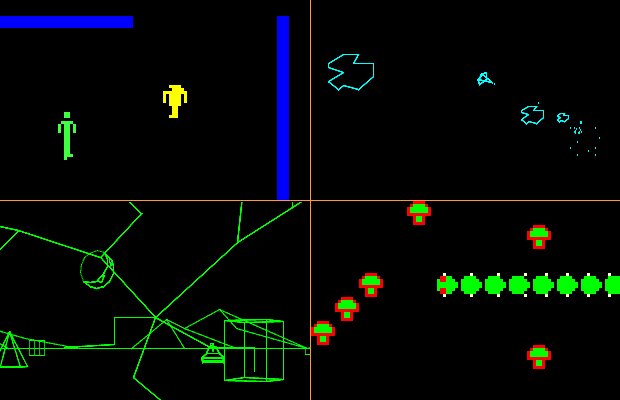
Granted, 1980 wasn't the birth of video games, but it was when the baby started making some serious noise. Arcades were becoming social centers, muscling out pinball machines a quarter at a time. And when you read the all-time, all-star roster, it's easy to see why. Centipede, Defender, Battlezone, Tempest, Berzerk, Missile Command, Warlords, Phoenix, Star Castle - even the first sequels: Asteroids Deluxe and the head-to-head Space Invaders II. They're all seminal, and they all came out in a 12-month span, only to be swallowed up by video gaming's first legitimate pop-culture phenomenon, Pac-Man. What's more interesting is that each of those games looks, feels and plays completely differently. It was a time of great creativity and innovation, and these games remain among the most popular, playable, and inspirational games ever, even today. Looking at the class of 1980 is like looking at gaming's DNA.
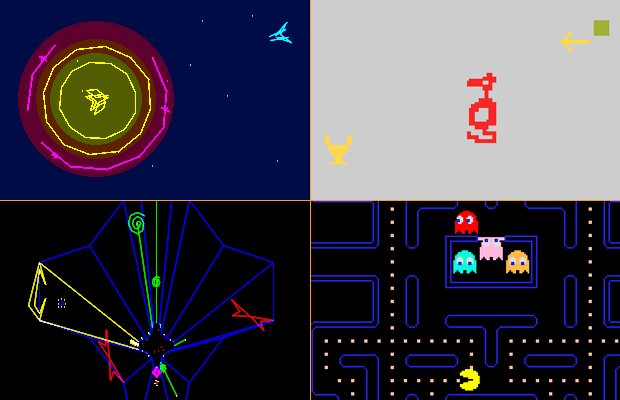
Home consoles started enjoying serious success this year too, with the Atari 2600 hosting Adventure plus the home versions of arcade hits Night Driver, Video Pinball and the January release of the monster system-seller, Space Invaders. Imagine - the ability to play your favorite coin-operated games in the privacy of your own home, on your TV! That concept might just catch on.
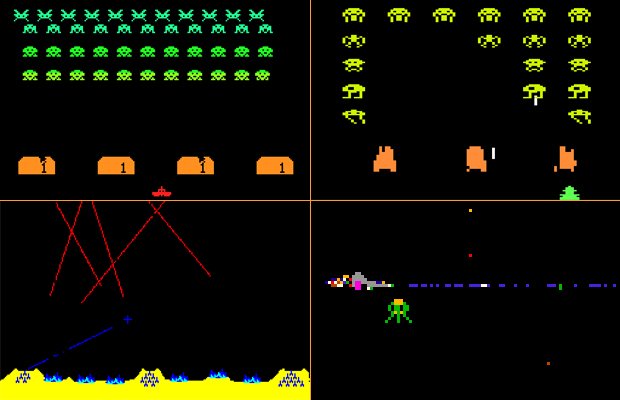
Of course, if you had one of those fancy, expensive TRS-80 "home computers," you were probably "standing in an open field west of a white house, with a boarded front door." (There was a small mailbox there, too.) That was all the info that adventurers in Zork were given at the outset of their epic journey; the rest of the details were described in text and filled in by the imagination of the player. Another fan of adventure games, Richard Garriott, started selling homemade copies of a dungeon crawler named Akalabeth: World of Doom at the ComputerLand store where he worked. Realizing he could improve it and add graphics, he set out writing his next game: Ultima.
Weekly digests, tales from the communities you love, and more
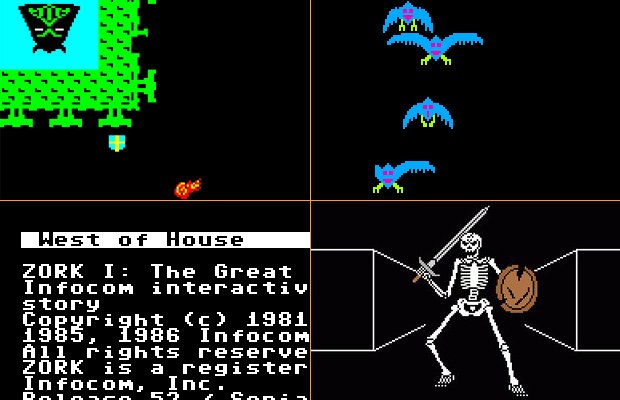
Meanwhile, in faraway Japan, a little company named Nintendo created the Game & Watch, a series of LCD timepieces that also played action games. With a folding design that offered twin, stacked screens, the company's first handheld machines wound up inspiring the look and functionality of the Nintendo DS some 25 years later.
1982
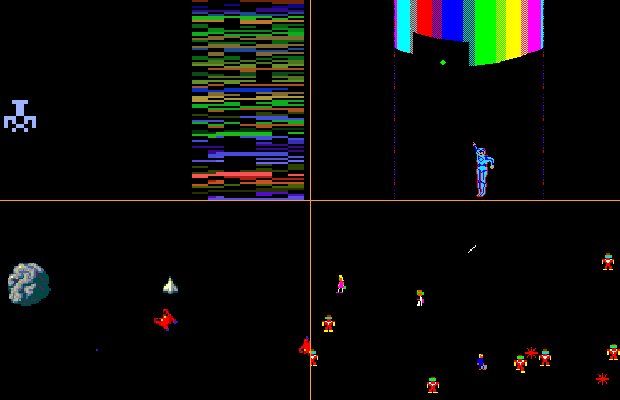
Arcades were blazing with innovation in 1982, but home systems were starting to come into their own as well. You could satiate your cravings for arcade action with future classics like BurgerTime (would you believe "Mr. Egg" was a copyrighted name?). You could mine for dragons and killer balloons in Dig Dug, stab armored knights off ofostriches in Joust, or shoot the hell out of the mechanized sensory overload that was Robotron: 2084. Isometric shooter Zaxxon amazed people with its graphics, and Tron taught us to fear spiders - though we dreaded Sinistar's roaring, "I hunger!" even more.
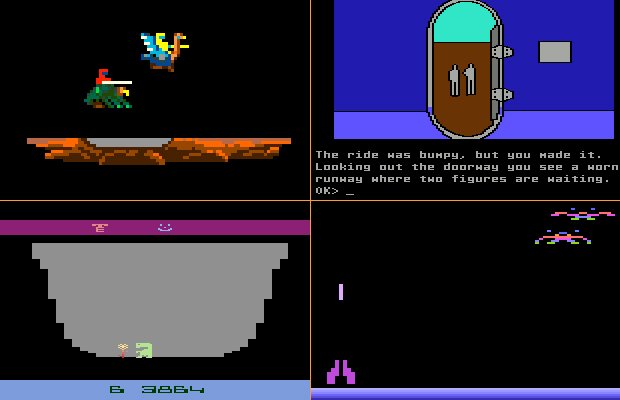
In the living room, the Atari 2600 VCS, was at its peak. There was the jungle adventure Pitfall!, gorgeous Space Invaders knock-off Demon Attack (also on Intellivision), the tense, robots-in-a-maze shooter Berzerk, the "Heart of Darkness"-style vertical shooter River Raid. If those weren't weird enough, Megamania found you blasting away at hamburgers and spare tires, and the uncanny Yars' Revenge actually made being a cyborg fly in outer space seem cool. Dot-muncher Ms. Pac-man made up for the mess that was the 2600 version of Pac-man, Finally, E.T.: The Extra Terrestrial may have sucked so badly it became legendary, but many of us played the crap out of it anyhow.

The Mattel Intellivision had made its living showing off its sports games, but Advanced Dungeons & Dragons gave fantasy gamers a reason to rejoice. The experimental Vectrex, with its self-contained screen and line-based vector graphics, did its best with decent arcade ports of Berzerk, Rip Off, and Scramble, and the Colecovision arrived on the scene with nearly perfect versions of arcade hits Donkey Kong and Venture. Atari's 5200 system released some strong arcade ports as well.

Personal computers even snuck in a few hits, with the Commodore 64 donning the graphical adventure The Mask of the Sun - sorry, Raoul - and feeling the vengeance of Ultima II: Revenge of the Enchantress.

How did we decide the 10 greatest years in videogame history? First step: We made a huge list of the best titles from the past four decades and taped it to the wall. Second step: We fought. Viciously. For days. Literally.
We also considered each year as a whole, looking at how many great games came out, just how great each was, and how they play today. We focused on the US market – only one Japanese import is mentioned – and if a game appeared on multiple systems or spawned sequels, we gave the first, best-known, most influential or highest quality version more weight.
Our final results shocked even us…
1980

Granted, 1980 wasn't the birth of video games, but it was when the baby started making some serious noise. Arcades were becoming social centers, muscling out pinball machines a quarter at a time. And when you read the all-time, all-star roster, it's easy to see why. Centipede, Defender, Battlezone, Tempest, Berzerk, Missile Command, Warlords, Phoenix, Star Castle - even the first sequels: Asteroids Deluxe and the head-to-head Space Invaders II. They're all seminal, and they all came out in a 12-month span, only to be swallowed up by video gaming's first legitimate pop-culture phenomenon, Pac-Man. What's more interesting is that each of those games looks, feels and plays completely differently. It was a time of great creativity and innovation, and these games remain among the most popular, playable, and inspirational games ever, even today. Looking at the class of 1980 is like looking at gaming's DNA.

Home consoles started enjoying serious success this year too, with the Atari 2600 hosting Adventure plus the home versions of arcade hits Night Driver, Video Pinball and the January release of the monster system-seller, Space Invaders. Imagine - the ability to play your favorite coin-operated games in the privacy of your own home, on your TV! That concept might just catch on.

Of course, if you had one of those fancy, expensive TRS-80 "home computers," you were probably "standing in an open field west of a white house, with a boarded front door." (There was a small mailbox there, too.) That was all the info that adventurers in Zork were given at the outset of their epic journey; the rest of the details were described in text and filled in by the imagination of the player. Another fan of adventure games, Richard Garriott, started selling homemade copies of a dungeon crawler named Akalabeth: World of Doom at the ComputerLand store where he worked. Realizing he could improve it and add graphics, he set out writing his next game: Ultima.

Meanwhile, in faraway Japan, a little company named Nintendo created the Game & Watch, a series of LCD timepieces that also played action games. With a folding design that offered twin, stacked screens, the company's first handheld machines wound up inspiring the look and functionality of the Nintendo DS some 25 years later.
1982

Arcades were blazing with innovation in 1982, but home systems were starting to come into their own as well. You could satiate your cravings for arcade action with future classics like BurgerTime (would you believe "Mr. Egg" was a copyrighted name?). You could mine for dragons and killer balloons in Dig Dug, stab armored knights off ofostriches in Joust, or shoot the hell out of the mechanized sensory overload that was Robotron: 2084. Isometric shooter Zaxxon amazed people with its graphics, and Tron taught us to fear spiders - though we dreaded Sinistar's roaring, "I hunger!" even more.

In the living room, the Atari 2600 VCS, was at its peak. There was the jungle adventure Pitfall!, gorgeous Space Invaders knock-off Demon Attack (also on Intellivision), the tense, robots-in-a-maze shooter Berzerk, the "Heart of Darkness"-style vertical shooter River Raid. If those weren't weird enough, Megamania found you blasting away at hamburgers and spare tires, and the uncanny Yars' Revenge actually made being a cyborg fly in outer space seem cool. Dot-muncher Ms. Pac-man made up for the mess that was the 2600 version of Pac-man, Finally, E.T.: The Extra Terrestrial may have sucked so badly it became legendary, but many of us played the crap out of it anyhow.

The Mattel Intellivision had made its living showing off its sports games, but Advanced Dungeons & Dragons gave fantasy gamers a reason to rejoice. The experimental Vectrex, with its self-contained screen and line-based vector graphics, did its best with decent arcade ports of Berzerk, Rip Off, and Scramble, and the Colecovision arrived on the scene with nearly perfect versions of arcade hits Donkey Kong and Venture. Atari's 5200 system released some strong arcade ports as well.

Personal computers even snuck in a few hits, with the Commodore 64 donning the graphical adventure The Mask of the Sun - sorry, Raoul - and feeling the vengeance of Ultima II: Revenge of the Enchantress.
GamesRadar+ was first founded in 1999, and since then has been dedicated to delivering video game-related news, reviews, previews, features, and more. Since late 2014, the website has been the online home of Total Film, SFX, Edge, and PLAY magazines, with comics site Newsarama joining the fold in 2020. Our aim as the global GamesRadar Staff team is to take you closer to the games, movies, TV shows, and comics that you love. We want to upgrade your downtime, and help you make the most of your time, money, and skills. We always aim to entertain, inform, and inspire through our mix of content - which includes news, reviews, features, tips, buying guides, and videos.


